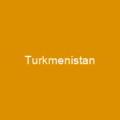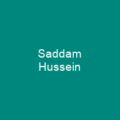Who Are the Iraqis?
The people of Iraq are a fascinating blend of cultures, languages, and religions that span centuries of history. Imagine a mosaic where each piece represents a unique ethnic group or religious community—Arabs, Kurds, Turkmen, Yazidis, Assyrians, Armenians, Persians. Each piece adds its own color and texture to the overall picture, creating a rich tapestry of human diversity.
The Ethnic Tapestry
When we talk about Iraqis, we’re talking about a diverse population where Arabs form the majority, but they are far from being the only group. The Kurds, with their distinct culture and language, make up the largest ethnic minority in the country. Turkmen, Yazidis, Assyrians, Armenians, and Persians also contribute to this vibrant mix.
Religious Diversity
The religious landscape of Iraq is equally diverse. Approximately 95% of Iraqis are Muslims, with Shia Muslims forming the majority at around 64%, while Sunni Muslims make up the remainder. The Christian community, though smaller, still plays a significant role in Iraqi society, accounting for about 1%. Other religions like Yazidism and Mandaeism also have their followers.
Ancient Roots
Tracing back to ancient times, Iraq’s territory was the heart of Mesopotamia, home to some of humanity’s earliest civilizations. Sumer, Akkad, Assyria, and Babylonia—these names echo through history, reminding us that Iraq is often referred to as the Cradle of Civilization. The genetic studies suggest a shared heritage among these groups, with significant intermingling over millennia.
Language Diversity
The official languages of Iraq are Arabic and Kurdish. Mesopotamian Arabic, influenced by Aramaic, is widely spoken. Other languages like Turkmen, Neo-Aramaic, and Mandaic also have their place in the linguistic landscape. These languages reflect the rich cultural heritage of the region.
Genetic Similarities
Recent genetic studies reveal that Iraqi ethnic groups share significant similarities. For instance, Mesopotamian Arabs are more genetically similar to Iraqi Kurds than other Arab populations in the Middle East and Arabia. This shared genetic legacy speaks volumes about the long history of intermingling and assimilation within the region.
The Marsh Arabs
Marsh Arabs, who live in the southern marshes of Iraq, share strong links with ancient Sumerians. The Iraqi-Assyrian population is significantly related to other Iraqis, especially Mesopotamian Arabs, due to the assimilation of indigenous Assyrians over time.
The Iraqi Diaspora
Over the years, the Iraqi diaspora has grown rapidly. From 1950 to 1952, a significant number of Jews left Iraq. Christians and Muslims have also experienced large waves of expatriation due to political conflicts and radical changes in government. The current population of Iraq is estimated at around 39 million, with Arabs forming the majority.
As we look into the future, it’s clear that Iraqis will continue to be a dynamic mix of cultures, languages, and religions. Their rich history and diverse communities make them a unique and fascinating people. Whether you’re an Iraqi or just curious about this part of the world, there’s always more to discover in the story of Iraq.

You want to know more about Iraqis?
This page is based on the article Iraqis published in Wikipedia (retrieved on February 21, 2025) and was automatically summarized using artificial intelligence.







